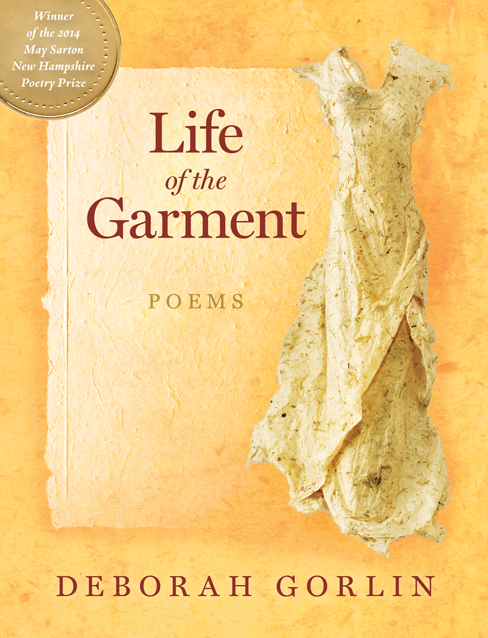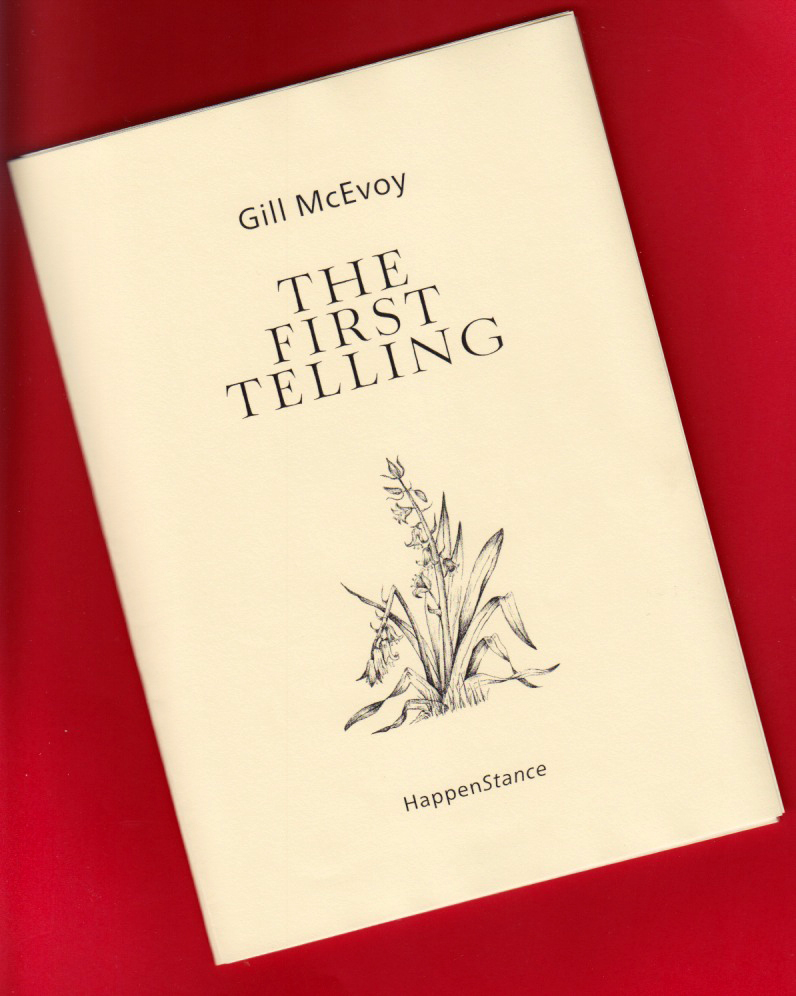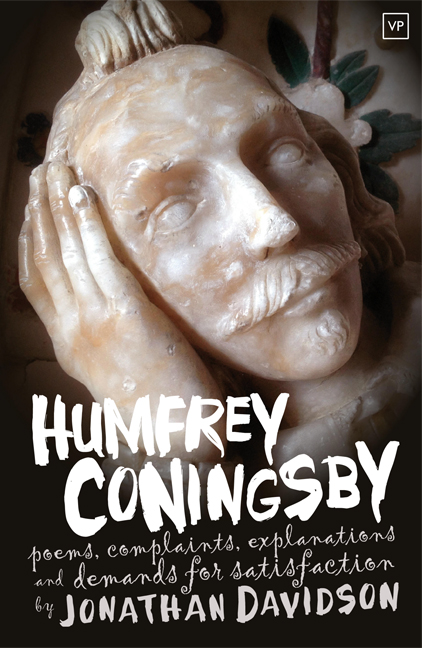Life of the Garment by Deborah Gorlin
– Reviewed by JPL –
We are not mannequins…
God, naked, underneath the clothes.
[Ode to Shopping]
Engaged with the outward bustle of the world, Deborah Gorlin’s Life of the Garment details a ‘Zen Genesis’ – the experience of breathing, of being a woman in the western world, and, beyond this ‘rind of skin’, the particulars of family life. ‘We breathe as one’ in all our multiple forms:
Meantime, crickets jive
In egg crates, the food of choice for the insectivores,
skinks and tree frogs frolic in their places,
pets from many kingdoms, exotic fish, parvenu rodents, a room of birds.Unexpected creatures juxtaposed: shock jock macaw
Differs from the shingle-backed lizards[Mix and Match]
Gorlin’s inventiveness combines the imaginative leap with the disposition of the line, nuanced and alive. There are many juxtapositions within the book, which is divided into four sections. The first, ‘Familiar Ground’, explores being in a family – more, a Jewish family – and its relationships. ‘Pride of Place’, the second section, focuses on being in the urban environment, with much traffic to invade the sensibilities. The third section, ‘The Far-Flung World’, begins
As breath, its exquisitely attuned, nuanced
within our billowy lungs,as impetus for speech and song, between vibratory prongs,
it supports soundpunches out words for us…..
Oh air, you paragon of give and take.
[United Air]
and ends with ‘Zen Terror’, a ‘neutral presence’ the ‘ hollow doll’ after a wonderful series of poems exploring the mythos, almost the anthropology, dress and substance projected onto dolls across cultures world-wide.
I sometimes wonder
If I were to brave this absence,
instead of insist upon my return,whether I might find something else again,
like joy or truth.[Zen Terror]
The final section, ‘The Life of the Garment’, begins with the searing title poem, focusing on the ‘ironic logo’ (“yellow triangles sewn on the front’) of the ‘Ralph Lauren of Auschwitz.’
Of all my ventures in textiles, these artefacts further
my resolve. The fabrics – wool, cotton, or linen – endure,skillfully tailored, admirable as garments.
Compliments to the Jews in the labor camps.
This section also takes us to the noumenal, synthesises themes previously addressed. For example, ‘Spiritual Architecture’ takes the earlier quote ‘Mix and Match’ to a new level –
Cheek by jowl, these creatures live as
a single organism, in a patterned world,
solid void, solid void, one two, one two,
the black and white piano keys, the bathroom tile,
the uniform dress of chorus membersas they raise their voice in song…
masonry of bricks that built a house
for fluid God, who long ago moved in.[Spiritual Architecture]
There is something almost gnostic in Deborah Gorlin. There is a drive to join the outward world with its mystical foundation that is beyond the materialism (in all its faces ) we daily confront. This is like a bridge-making between these seemingly different worlds, a Zen cloaking of a Jewish sensibility evidenced in the commemorative themes of her imagination. As a result, the epigrams are key at the start of the book (‘to all my dead’) quoting James Baldwin’s assertion that the writer’s responsibility is “to excavate the experience of the people who produced him.” She is deeply true to this:
As if these were the only subjects in a world of light and space
…this sudden grace of presence,
…arranges them all for us in the bowl of the world[Zen Genesis]
Hebrew warms me twice, in my longing
for the blue fire at earth’s magnetic core,
and the distant white radiance[Twice Woods Hebrew, p.106]
It would be nice if my address was your attic, your Ouija board,
but in the end, you’ll need to rake
outer space for white hole after white hole,gulping down, like coffee, every single sun.
[Jane Doe of the Spirits]
But there is humour, too, which brings a smile to a reader’s face – the opulent clothing of previous generations, the Little Teapot, Fran Weber’s glittery jewelry, Maisie’s ‘addled’ choice typical of a certain generation as well their canasta game, the whole
….hodgepodge like a platypus,
part star, skunk tail, blue jay, mashed taxonomies.[True Nature]
The imaginative inventiveness of the series of Doll poems in the third section takes the reader to another level of seeing, beyond outward experience of being ‘mother’s daughter’, the ‘dutiful schoolgirl’ ‘who cleans up after the family heart’ [Life Drawing]. From the ‘secret Confederates’ of Playthings:
In the arms of my decorous mistress
I was an accomplice, usedto store contraband in my head
a doll mule……I was beyond suspicion
to the ‘Wishbone’:
where it is
Better to stay-in-make-believe
than to wish for what will never come.And if he should take her, then it is one
who loves him, not the doll, not the doll[Zulu]
from stimulating phrases – ‘frocked in pink’, ‘masks of the masks emerge from the tall grasses’, ‘we seem to float on still water, majestic, a precise languor’ – to the moving ‘The Dead Twin’:
I live with souls like big ships anchored, done journeying. Fine for this world, but I am not my brother. We share a single soul, a Solomon of nothingness and substance.
One could write a whole chapter on Deborah Gorlin’s use of ‘grasses’ as a reference with multiple significances but, like her ‘Commentary on Crying’, her poems may ‘clean hearts’ and ‘replenish the soul’s aquifers’ and all that for the price of a thoroughly well-produced book where even the paper has a quality feel, making me understand why it is a prize-winner in more ways than one. Thank you, Deborah.





